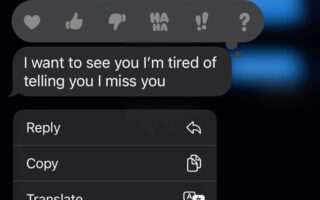Cashback is basically a little “thank you” from your bank for using their credit card to make purchases. It’s like getting a small percentage of your money back every time you spend.
So, when a bank says, “Get 5% cashback on purchases,” it means that for every dollar you spend using their credit card, you’ll get 5 cents back. Let’s break it down:
- If you spend $100, you get $5 back.
- If you spend $1,000, you get $50 back.
This cashback amount is usually credited back to your card as a statement credit (reducing your balance), deposited into a rewards account, or sometimes even sent to you as actual cash.
In this article
Things to Watch Out For
- Category Restrictions – Some cashback offers only apply to specific types of spending, like dining, travel, or groceries. If it’s “5% on dining,” then buying clothes won’t count.
- Spending Limits – Some banks cap how much cashback you can earn. They might say, “5% cashback on up to $500 in purchases per month.” That means after $500, you won’t get any more cashback for that category.
- Rotating Categories – Some cards switch the categories every quarter. One month, you get 5% on gas, and the next, it’s 5% on groceries. You have to activate these in some cases.
- Annual Fees – Some cashback credit cards come with fees. You need to make sure you earn enough cashback to justify the cost.
- Interest Charges – If you don’t pay off your balance in full, the interest can outweigh any cashback you earn. If you carry a balance, you might end up paying way more in interest than you get back in rewards.
Basically, cashback is free money if you play it right—pay off your balance in full, use the card strategically, and maximize categories. Otherwise, the bank wins by charging you interest.
TEN REASONS WHY YOU NEED CREDIT CARD PAYMENT CASHBACKS
1. The Accidental Five-Star Chef Flex
You signed up for a credit card that gives 5% cashback on groceries, but you also landed an exclusive invite to a private dinner party where you must cook for high-society foodies. You drop $2,000 on luxury ingredients—A5 Wagyu, truffle oil, saffron, imported caviar, and some ridiculous single-origin olive oil. Your cashback? $100. And since everyone at the party now thinks you’re a Michelin-starred savant, you suddenly find yourself catering ultra-lux private dinners…meaning more grocery cashback, forever.
2. The Designer-Bag Investment Scheme
You spot a limited-edition Chanel bag before the hype hits and before resellers go wild. It’s $10,000, and you use your 5% cashback card at checkout. That’s $500 back. Then, three months later, the bag is reselling for $25,000. You flip it, net a $15,000 profit, and the cashback you earned is basically free money that covered a luxury brunch.
3. The Real-Estate Tax Loophole
Your city lets you pay property taxes with a credit card (most don’t, but some do—sneaky municipalities trying to get transaction fees covered by desperate homeowners). Your 5% cashback card is feeling generous, and you max it out to cover the $8,000 tax bill. That’s $400 back, which you use to partially fund your next Paris trip. The kicker? You were going to pay that tax bill anyway.
4. The Paid-to-Go-on-Vacation Hack
A luxury hotel chain is running a spend $2,000, get $300 in free stays promo, plus you have a 5% travel cashback credit card. You book a $2,000 vacation, get $100 cashback, and then the $300 free nights credit. That’s $400 in value back. You essentially just booked a five-star stay in Saint-Tropez and got a free spa day, all because you used the right card at the right time.
5. The Elite Art Dealer Play
You’re at a high-end gallery where a renowned artist’s new collection is launching. You recognize the whisper-only investment potential and snag an $18,000 piece on your 5% cashback card. That’s $900 back. A year later, an art collector pays quadruple for it. You’re now $54,000 richer, and that $900 cashback? Basically the frame for your next piece.
6. The Emergency Vet Bill Bonus
Your Persian cat, who already acts like they own the apartment, swallows a $20 bill just to prove a point. Vet bill? $5,000. But because you have a 5% cashback card, you get $250 back—money you had to spend anyway. It doesn’t erase the trauma of prying crumpled cash from a cat’s stomach, but at least you earned something in return.
7. The Airport Duty-Free Arbitrage
You’re in an international airport and spot a cult-favorite designer fragrance for way less than domestic prices. It’s $1,000 in duty-free (normally $1,800 retail). Your 5% cashback card gives you $50 back. You then resell the bottle to a waiting-list-desperate influencer for $1,600. Net profit: $650. Cashback earned: also money.
8. The Hyper-Strategic Rent Payment Maneuver
Your landlord doesn’t take credit cards, but a rent-payment platform lets you pay with your 5% cashback card for a 2% processing fee. Your rent is $4,000. The processing fee is $80, but you get $200 in cashback. You’re net positive, just for hacking the system.
9. The Hyper-Scheduled Skincare Haul
You’re obsessed with a luxury skincare line that only runs a single annual sale. You wait all year, stack a 25%-off sitewide promo with a 5% cashback card, and drop $3,000 to stock up. Your cashback? $150. You now have a year’s supply of radiance, and your bank is accidentally subsidizing your flawless skin.
10. The Car-Down-Payment Power Move
You negotiate a luxury car down payment to be paid by credit card. The dealership hesitates, but you charm them into it (maybe with the promise of buying their extended warranty, which you cancel later). You put down $20,000 on your 5% cashback card and pocket a cool $1,000. The car? You were buying it anyway. The cashback? Now funding your first gas tank—on premium, of course.
When I say, “Cashback is free money if you play it right,” I mean that if you use your credit card in a smart, calculated way, you can make the bank essentially pay you to spend money—without giving them a dime in return. But if you don’t? The bank flips the script, and suddenly, you’re the one paying them for the privilege of using their card.
Let’s break it down.
1. Paying Off Your Balance in Full
A cashback credit card is a tool. And like any tool, if you use it correctly, it works for you. If you don’t, it works against you. The golden rule? Always pay your full statement balance by the due date.
Why? Because if you carry a balance, the bank starts charging you interest—often at a rate between 20-30% annually. Cashback percentages, on the other hand, are usually much lower, often between 1-5%. This means that if you don’t pay off your balance in full, whatever cashback you earn can instantly be erased by interest charges.
Let’s say you spent $1,000 on a card with 5% cashback. You earned $50 in cashback. But if you don’t pay that $1,000 in full and instead just make the minimum payment, the remaining balance accrues interest. If your APR is 25%, you’ll quickly owe way more than $50 in interest—completely canceling out your cashback and then some. You basically just handed the bank free money instead of them giving it to you.
2. Using the Card Strategically
Not all purchases are created equal. Some cards offer a flat cashback rate on everything, but many offer higher cashback rates on specific categories—like groceries, dining, travel, or gas. The trick is to use the right card for the right purchases.
For example, if you have a card that gives 5% cashback on dining and another that gives only 1.5% on all purchases, you should always use the 5% card when eating out. Otherwise, you’re leaving free money on the table.
Now, let’s say your 5% dining cashback card has a quarterly limit of $500 in eligible purchases. If you go over that, you drop back down to 1% cashback. Knowing this, you might decide to use that card only for dining until you hit the $500 cap—then switch to another card.
3. Maximizing Categories
Some cashback cards offer rotating bonus categories, meaning that every few months, the 5% cashback category changes. One quarter it might be groceries, the next it could be travel, then gas, then online shopping. These cards usually require you to manually activate the bonus categories, which means if you forget, you miss out on that extra cashback.
Playing it right means staying aware of category changes and adjusting your spending accordingly. Let’s say you know that from January to March, your card gives 5% back on groceries. This might be the perfect time to stock up on non-perishables, buy gift cards at the grocery store (some still count as grocery purchases), or even pre-buy essentials like coffee pods or household items.
When the Bank Wins
If you:
- Forget to pay off your balance → you pay interest → cashback disappears.
- Use the wrong card for purchases → you earn less cashback → wasted potential.
- Don’t activate bonus categories → you miss out on extra cashback → the bank keeps more of its money.
- Let spending habits be influenced by cashback → you buy unnecessary things → the bank profits.
Banks want you to slip up. They hope you get lazy and carry a balance. They count on you forgetting to optimize your spending. They expect that you’ll see “5% cashback on dining” and then justify eating out more than you normally would, spending more money than planned. That’s how they make their billions.
But if you’re disciplined? If you never carry a balance, always use the right card, and take full advantage of bonus categories? Then the bank has no choice but to give you free money, and you walk away winning.



